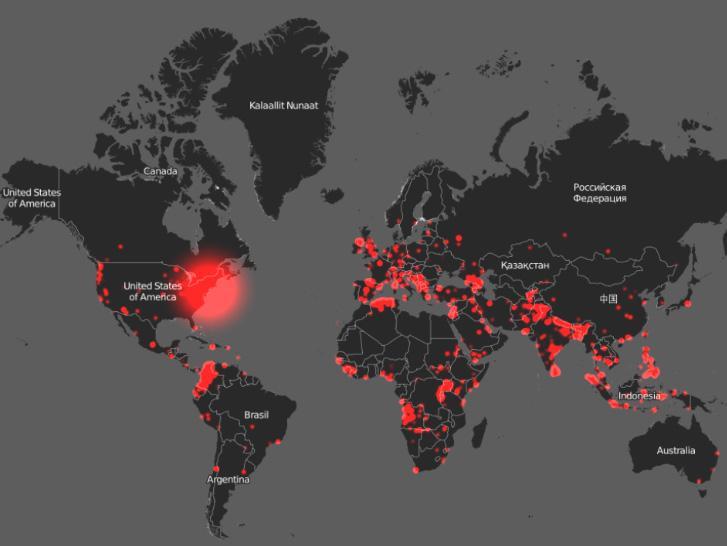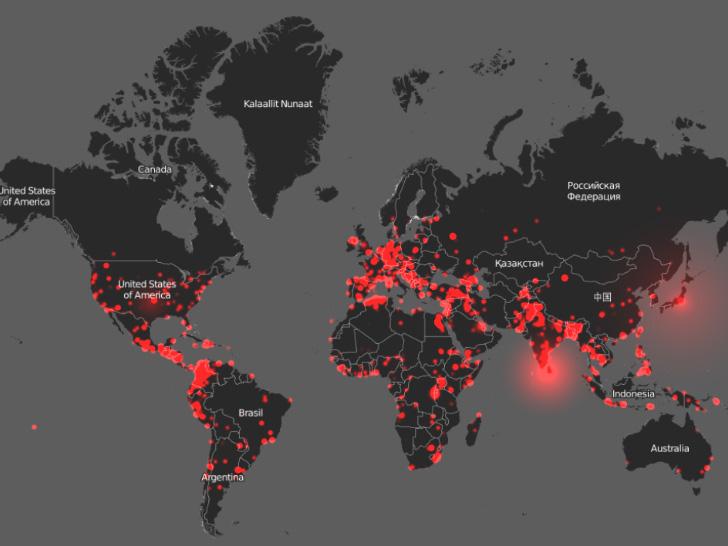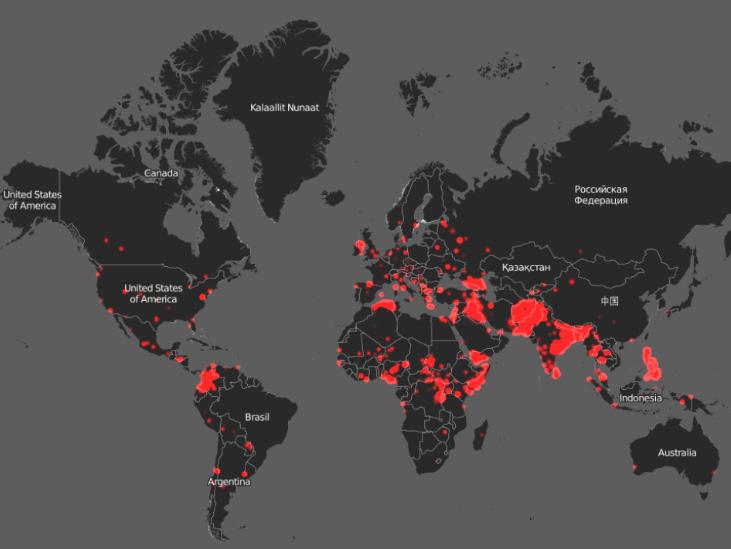Startling maps show every terrorist attack worldwide for the last 20 years
Data from the Global Terrorism Database compiled into a stunning data visualization puts the last two decades of terrorist activity in great relief

Your support helps us to tell the story
From reproductive rights to climate change to Big Tech, The Independent is on the ground when the story is developing. Whether it's investigating the financials of Elon Musk's pro-Trump PAC or producing our latest documentary, 'The A Word', which shines a light on the American women fighting for reproductive rights, we know how important it is to parse out the facts from the messaging.
At such a critical moment in US history, we need reporters on the ground. Your donation allows us to keep sending journalists to speak to both sides of the story.
The Independent is trusted by Americans across the entire political spectrum. And unlike many other quality news outlets, we choose not to lock Americans out of our reporting and analysis with paywalls. We believe quality journalism should be available to everyone, paid for by those who can afford it.
Your support makes all the difference.In the US, your risk of death due to terrorism is roughly 1 in 46,000.
Around the world, that rate can vary wildly. In an attempt to visualise those global risks, Carnegie Mellon researchers teamed up with Robert Muggah, a global security expert and director of the think tank Igarapé Institute.
Together, they created Earth TimeLapse, an interactive platform that relies on data from the Global Terrorism Database to create maps of how many terrorism-related deaths occur annually worldwide. The larger the red circle, the more deaths in a given attack.
Here's what the last 20 years of that data looks like.
1996 saw a spate of attacks in Central America and south Asia. In December of that year, a train bombing in India killed 33 people.

A year later, in 1997, suicide bombings in Israel killed more than a dozen people and injured more than 150. Bombings also took place in Sri Lanka and Egypt. A shooting took place in India, killing 23 and injuring 31.
In 1998, the greatest losses of life due to terrorist activity came in Kenya and Tanzania. Members of al-Qaeda bombed two US embassies, killing more than 200 and injuring over 4,000.
The worst of 1999's activity occurred in the southwestern Dagestan region in Russia, just west of Kazakhstan. A series of bombings struck apartment buildings, killing nearly 300 and injuring more than 1,000. Debates swirl whether Chechen separatists carried them out or the Russian government staged them to elect Vladimir Putin into office.
The turn of the millennium was a relatively peaceful year. The world made it until two days before the new year before 2000 saw its first major attack: a wave of bombings in the Philippines that killed 22 and injured roughly 100.
September 11, 2001 marked the US' greatest loss of life from a foreign attack in the country's history. More than 2,700 people were killed in the attacks on New York City's Twin Towers. About 300 of those were firefighters and emergency responders.

A year later, 2002 saw a consistent bundle of activity in Israel and South America. Sniper attacks in the mid-Atlantic region of the US killed 17 people and injured 10.
Bombings spiked somewhat in 2003, as attacks took place in Russia, Morocco, and Israel. As the Iraq War began, suicide bombings started to become more commonplace around the country.
March 2004 saw the Madrid train bombings, which killed nearly 200 people and injured over 2,000. Attacks also proliferated in Iraq and Pakistan. The Taliban and al-Qaeda were responsible for many of the attacks in Europe and the Middle East at this time.
In early 2005, the Iraqi city of Hillah experienced a devastating car bombing that took 127 lives and injured hundreds more. Later that July, four suicide bombers blew up a London bus. It killed more than 50 people and injured 700.
Unrest in the Middle East continued to produce monthly terror attacks in Iraq, Afghanistan, and Pakistan. In July, pressure-cooker bombs on a Mumbai train also led to hundreds of deaths and injuries.
Dual bombings in outdoor Iraqi markets took place in the first two months of 2007. August saw the worst of it, however, when a series of car bomb attacks killed 800 people and injured 1,500. It's the second-deadliest terror attack behind September 11.
A coordinated series of shootings took place in Mumbai in late November 2008. Hundreds were killed and injured. Some terrorists relied on guns, while others planted an estimated eight bombs around the city.
The first half of 2009 saw relatively little terrorist activity, but the second half picked up as Iraq and India fell victim to suicide bombings and shootings. Car bombings killed hundreds in both Iraq and Pakistan in October of that year.
2010's worst activity occurred in Pakistan, due primarily to suicide bombings. More than 500 people were injured over a span of three days in September, all due to bombings.

2011 was a particularly bloody year. Pakistan and India made up the bulk of the terrorist activity, while east Africa and South America also showed modest levels of conflict.
With the Iraq War in the past, new sources of conflict crossed the western border into Syria in 2012. Damascus and Aleppo became hotbeds for terrorist activity.
Conflict intensified in these Middle Eastern countries in 2013, as car bombings in Damascus in February claimed roughly 80 lives and injured 250 people. The Boston Marathon bombings in April killed five and wounded more than 200.
Boko Haram attacks in Nigeria led to the deaths of more than 200 people and unknown number of injuries in March and hundreds more throughout 2014. Isis continued to ravage both Syria and Iraq.
Unrest in Nigeria and Cameroon led to thousands of deaths caused by Boko Haram forces opening fire on civilians. Bombings in Turkey and Yemen also produced hundreds of death. In December 2015, shooters claiming allegiance with Isis killed one dozen and wounded two dozen in San Bernardino, California.
• 26 time-management tricks I wish I'd known at 20
• 8 things successful people do when they don't like someone
• Airline gate agents share 17 things they’d love to tell travellers
Read the original article on Business Insider UK. © 2016. Follow Business Insider UK on Twitter.
Join our commenting forum
Join thought-provoking conversations, follow other Independent readers and see their replies
Comments